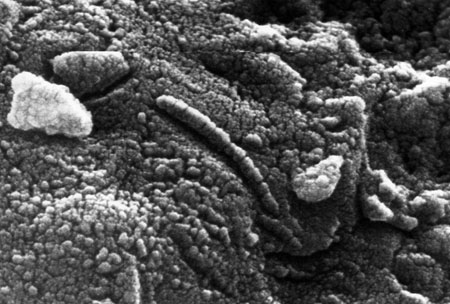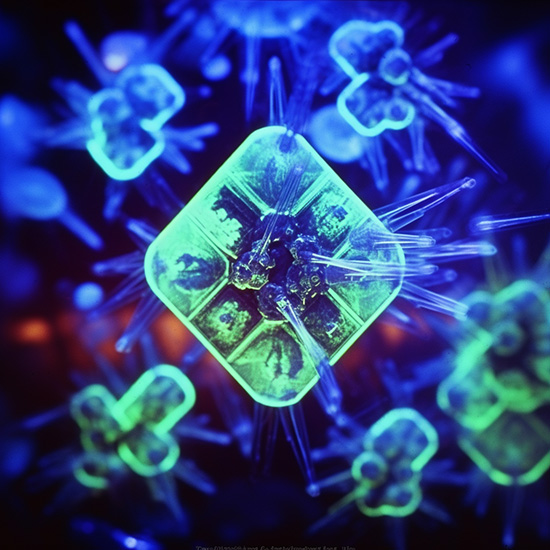Dr Z! I saw this movie the other day about some space bug that comes to Earth and kills a bunch of people. And I was remembering a piece you wrote a few months ago (https://www.ntanet.net/when-betelgeuse-blows/) about exploding stars and the radiation they put into space. And I was wondering if something like exploding stars wouldn’t kill any of the germs before anything could even reach the Earth? How much do I need to worry about this?
That was a great movie (and book, too), wasn’t it? First time I saw the movie was back in the 1970s – I saw it on TV when I was in high school, then I read the book and they blew my poor little brain. Since then I’ve learned a bit more and I’ve got to say I’m impressed with the research and the thought that went into the book – and it’s pretty challenging to figure out which parts are based on good science and which are utterly implausible. But let’s leave the book for a moment and talk about what we know about organisms traveling through space and the radiation they might encounter.
Most of the radiation in space is in the form of a “stellar wind” – protons, electrons, and heavier charged particles that form an envelope of gas around the star and then escape into space, or that are blown out from the star in stellar flares and super-flares. When these particles strike an organism they deposit energy, breaking DNA strands (assuming that an extraterrestrial organism has DNA) and inducing damage to the mechanisms that keep cells functioning and alive. On the other hand, most of these particles are also reasonably easy to stop – a few inches of rock or ice is enough to stop most particle radiation, so any organisms that are buried more deeply in a comet or asteroid (or other chunk of ice or rock) will be protected from most particulate radiation in space. But there’s more than just the particles flying through space – when they slam into a chunk of rock or ice the particles knock electrons loose and they produce x-rays and gamma rays as well; this secondary radiation builds up, reaches a maximum anywhere from a few to several inches beneath the surface, and then gradually dies off.
X-rays and gamma rays are different – they penetrate a lot farther into both rock and ice; a blast of gamma and x-ray radiation can sterilize rocks a meter or more in diameter, depending on how powerful the source is. Hot stars, for example, give off ultraviolet and some x-ray radiation, but the dose rate falls off quickly as you move away from the star – it’s hard to produce a deadly x-ray, UV, or gamma ray dose at a great distance from even the hottest of stars. On top of that, UV and x-rays are fairly easy to shield and the most penetrating gamma rays are produced in the smallest quantities.
There are higher-powered sources of all of these – the accretion disks circling black holes can get hot enough to emit high levels of gamma and x-ray radiation, and the jets emitted by some black holes and neutron stars can contain tremendous amounts of particulate radiation. These are dangerous to greater distances and can penetrate deeper into rock or ice – but there’s still a limit as to their ability to sterilize objects traveling through space.
It’s the highest-powered events that are the most interesting, though – the exploding stars you were wondering about. These bad boys put a ton of energy into space in the form of both particulates and photons – a supernova will, briefly, shine as bright as the entire galaxy that hosts it, and the most powerful events (which might originate in colliding black holes and neutrons stars) give off more energy than any known event since the Big Bang. The largest of these can sterilize small and mid-sized chunks of rock and ice to a distance of a few hundred light-years.

So here’s how this all affects the fate of microbes travelling through space inside of rocks and chunks of ice. If you go through the math you find out that a piece of rock or ice that’s about a meter in radius will be slammed with enough radiation to sterilize it about once every 5-10 million years or so. Considering that it can take longer than that for a rock to travel from Mars to Earth, it’s pretty likely that anything traveling through space will be exposed to a sterilizing dose of radiation multiple times. Larger rocks give more shielding, but it takes a long time to get from one place to another because space is bigger than we can imagine. And, while a large rock gives more protection than a smaller one to microbes sheltering in the middle, it turns out that the best size to protect a microbe (or microbial colony) might be something the size of a grain of sand or dust – something too small to generate the secondary radiations we talked about earlier.
One last thing to consider is that microbes are very resistant to radiation, and microbial colonies, even more so. If a person, for example, is exposed to enough radiation to kill 10% of their cells, the person will likely die. But if a bacterial colony has 99% of its cells killed, the colony will be back to full strength just a few days or weeks later. And the cells that survive to pass their genes on to the next generations are likely to have genes that dispose them to be radiation resistant, making things…problematic.
The bottom line is that there there’s no reason that microbes can’t hitch rides to make it from planet to planet, but there are some impediments. But the universe – even just our own galaxy – is so big that it’s got to have happened at least once. And if it’s happened once then, however small the odds, it might just happen again. But I’m not holding my breath. And getting back to the book and movie…although I think the microbes in The Andromeda Strain fed on energy – wasn’t there a plot line towards the end where the military was planning on nuking the infected town only for the scientists to realize that the radiation would cause the microbes to grow out of control? So a bug like that one wouldn’t be sterilized by a nearby supernova – that would just launch the wee beasties into a gamma-powered reproduction cycle. Good thing they’re fictional!
